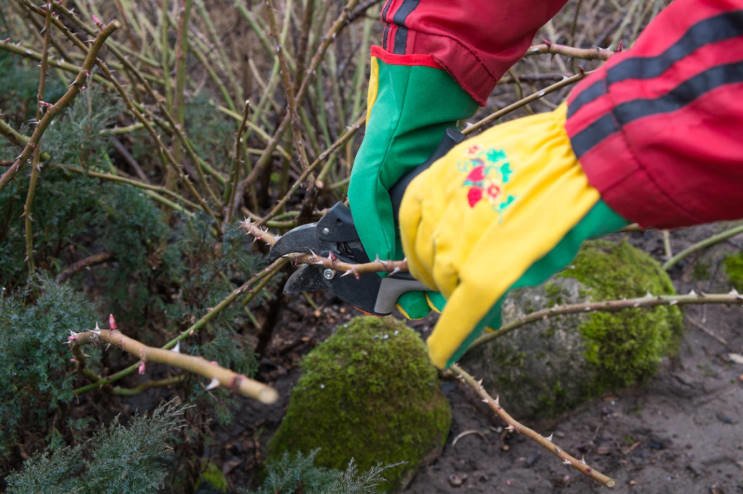
Is it time? How not to make a mistake and choose the right time for such an important procedure? Signal to the beginning of work will give forsythia, revealing their delicate buds. And we will tell you how to make a “Royal haircut” for representatives of all groups of captivating garden beauties.
Stamp roses
The method of cutting a mini-tree depends entirely on the group to which the Scion belongs.
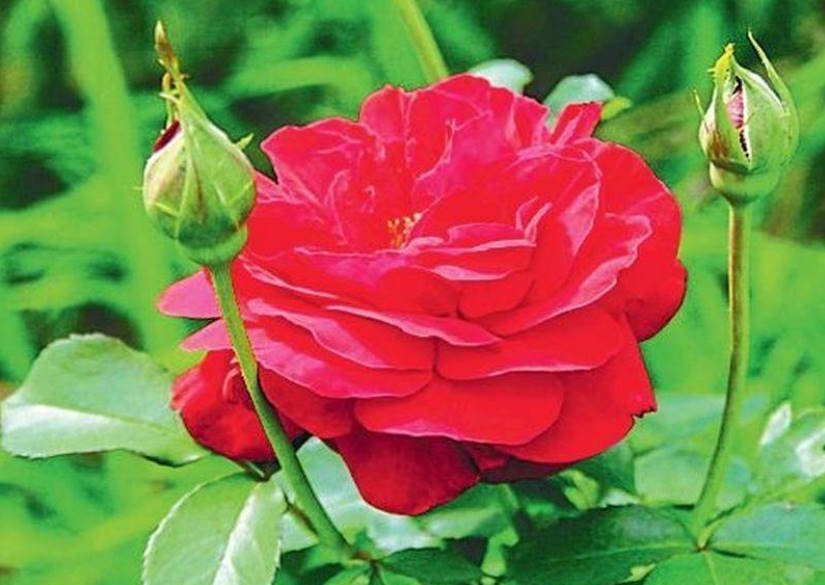
Stamp rose
If it belongs to flowerbed roses from groups Floribunda and Polyanthus, which are suitable for growing both in the open field and for tub culture, or tea-hybrid roses (as in our case), the plant should be trimmed as follows:
- Choose 4-5 healthy branches for the formation of the skeleton of the crown. They should be shortened to 3-4 kidneys, which is about 20 cm in length. Branches are weaker, and also all sick and damaged costs in General to remove.
- Pruner put, stepping back 5-10 mm up from the kidneys. The cut should be oblique, downward. Kidney needs to “look” outward.
- This is what a stamp rose looks like after pruning.

Cut the stem roses
But with the tree with cascading foliage, whose branches droop beautifully, act a little differently. In this case, the Scion is a miniature or climbing rose. If the rose belongs to the first group, the lash is enough to shorten half their length every two years.
Climbing roses
The choice of crop technique from this group depends on whether the rose belongs to a single flowering or repair. The rose ‘Super Excelsa’ in the photo is repairable. This means that the flowers appear on her young shoots, and on long-term branches. So, let’s start cutting. Short side shoots shorten to 3-5 buds. Long skeletal scourge shouldn’t touch.
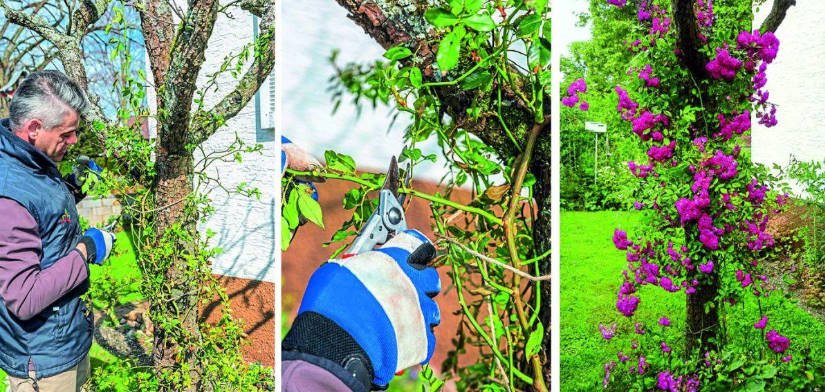
Climbing rose ‘Super Excelsa’
Once blooming climbing roses, which, incidentally, belongs to the majority of strong-growing Ramblers, spring is not cut, because the flowers they appear on last year’s growth. This procedure is only justified if the Queen is capricious and refuses to bloom. Usually beauties only slightly thinned after flowering, without affecting new shoots. It is desirable to direct the whip horizontally — it stimulates flowering. Of course, before the emergence of new shoots in any rose must remove all dried and damaged branches.
Ground cover roses
Groundcover roses (they include some undersized roses from other groups) have proved to be unassuming, universal in the use of long-flowering plants. Varieties of these roses are ideal for grafting on the trunk, good as soloists, in group planting and landscaping large areas. Like their wicker sisters, groundcover beauties branch perfectly, the covered surface of the soil is like a thick carpet. You can cut a rose from this group, even if young shoots have already appeared — new ones will grow quickly from the kidneys located below. In our example of the road planted a classic rose variety ‘The Fairy’.

Groundcover rose ‘the Fairy’
To these hardy plants bloomed profusely every season, enough every 2-3 years in the spring to shorten their scissors for cutting hedges to a height of 20-30 cm. Should be noted that the above-mentioned kind that belong to the group of Polyanthus, so the plant is quite acceptable to crop as any member of this group.

Ground cover roses
Fast-growing groundcover roses can be cut every year as well as their tall relatives — repair Park roses (see below). This even contributes to the improvement of plants: the leaves on the cropped at different heights of the branches dry faster from dew and rain.
Tea-hybrid roses and floribunda
These groups include repairing roses that form flowers on young shoots. It is thanks to regular spring pruning plants bloom profusely from year to year.
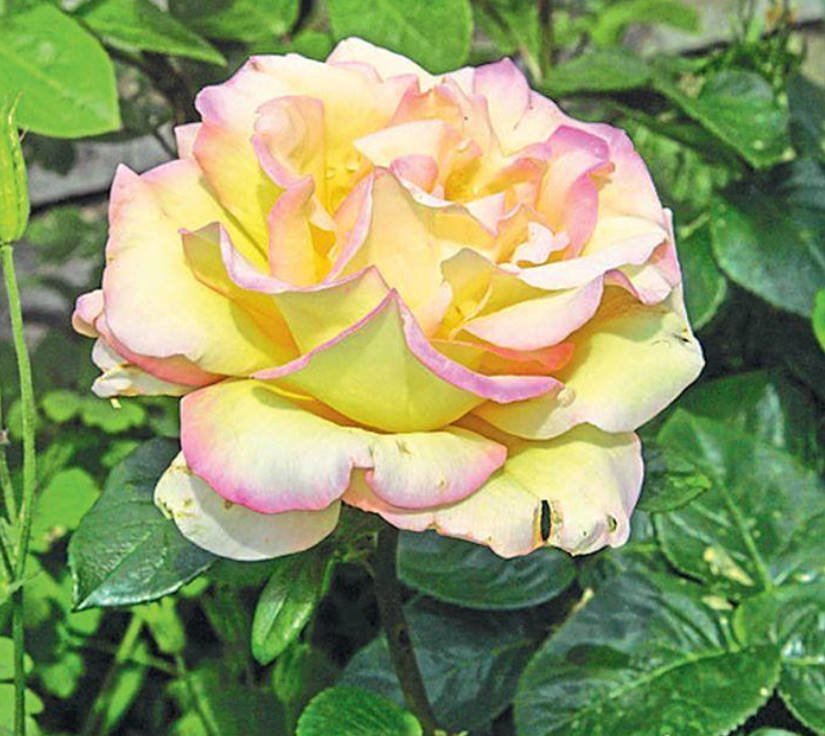
Tea-hybrid rose ‘Gloria Dei’
Our “model” was hybrid tea rose ‘Gloria Dei’, in which years not caring what she was “leggy”. In such a case, you need to start with rejuvenating trim — it will contribute to the emergence of new shoots and return the Queen to its former strength. For this:
- Part of the perennial branches should be cut at the base of the first branch.
- The result will be 5-6 branches with a length of about 30 cm at the bottom of the shrub Because yet young shoots, it is desirable to adjust the shape of plants, shortening the side branches to a few of the kidneys. When the rose gives young growth, the old branches can be removed.
- In the young (or rejuvenated by the above method) roses in the spring should be completely cut off the dry and weak branches, and powerful last year’s gains — to shorten to 4-5 buds.
- To form a “skeleton” Bush enough 5-6 healthy shoots, no more.
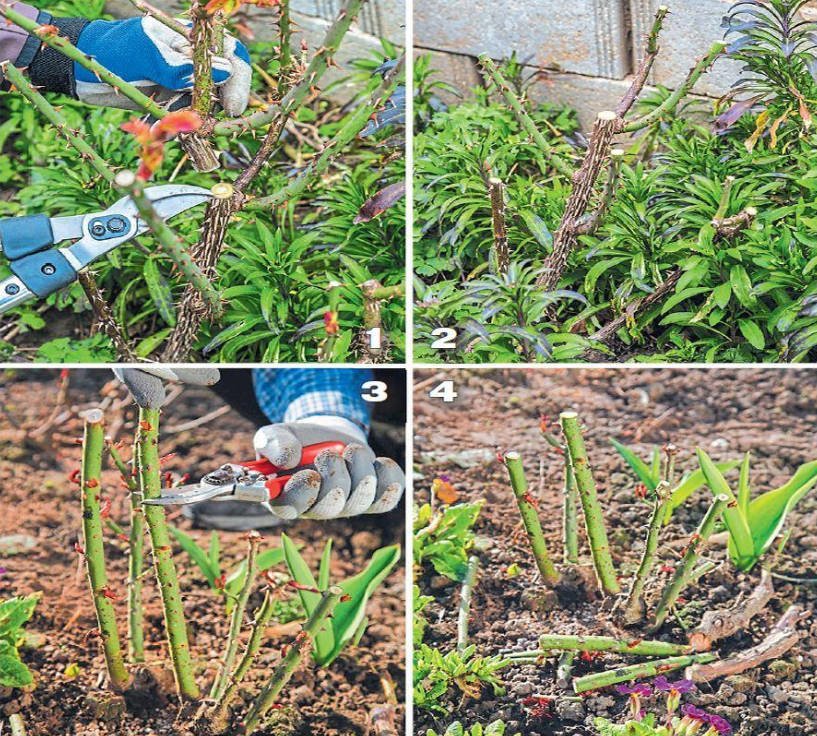
Hybrid tea roses
Low growing floribunda roses should be cut more, leaving three skeletal branches with three buds on each.
Park roses
When cutting plants of this group, it is first necessary to take into account the frequency of flowering. In remontant roses flowers are formed on young shoots, so in the spring the side gains should be shortened to about 5 buds. If necessary, you can shorten and skeletal branches: powerful by a third of their length, and weak — by two-thirds. Separate old stems should be completely removed.

English rose ‘Queen of Sweden’
A bit different to deal with once the blooming of Park roses. They form flowers on last year’s growth, so they do not need to be cut in the spring, but if necessary, the Bush can be thinned in the summer, after flowering.
Dangerous cold
In the photo below you can see why in the fall of the rose can not be much shorter stems. If the winter branch freezes, then, starting from the top, it should always be a reserve, to which frostbite has not fallen. Accordingly, the longer the escape, the more likely that it will not freeze to the ground and will remain at least a few live kidneys. In the spring frostbitten part-brown stump in the photo-you can just cut off over the branching (then there are already healthy tissue).

Brown stump can be simply cut.
In the spring, along with pruning, you can remove the ground, which Spud the plant to protect its roots and the place of vaccination from frost.

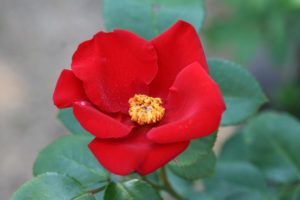


Leave a Reply